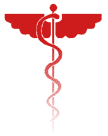 |
The LSUHSC New Orleans
Emergency Medicine Interest Group
Presents
The Student Procedure Manual
|
 |
General Extremity Splinting
by Jude Reed
Indications
Prerequisites
Contraindications and Cautions
Equipment
Procedure
Follow-Up
Education Issues
Indications
- Fractures, dislocations, sprains, major lacerations, bites, stings, etc.
- The purpose of splinting is to immobilize the injured area to minimize further
damage to tissue from unwanted motion.
- Splinting also helps reduce swelling and pain.
- The immobilization supplied by splinting prevents further soft tissue or bony
damage, and speeds the healing process.
Prerequisites
- Test neurologic and blood supply to areas distal to injury.
Contraindications and Cautions
- Handle the damaged area with care to minimize movement to reduce risk of complications.
- Pad bony prominences and any area where splinting materials might rub and damage
skin.
- If injury is to a bone immobilize joint above and below the site.
- If injury is to a joint immobilize the bone distal and proximal to the injury.
If injury involves a joint, splint in position found.
- If injury involves a long bone, gentle longitudinal traction may be exerted
during application.
- If circulatory compromise is found gently straighten to restore distal pulse.
- Make the splint fit the injury; do not force the injury to fit the splint.
- Keep attachment devices of splint from being placed directly over the site of
injury.
- Assess and document neurovascular status before and after splinting.
If deterioration occurs, the splint must be adjusted or reapplied.
Equipment
- Supplies needed varies greatly with the type of splint and area of injury
- Cast padding
- Ace wraps
- 2 inch tape
- Splint/plaster' material
Procedure
- Remove or cut away clothing over the injured site.
- Remove any object of clothing or objects in pockets that may cause irritation
to-skin once splint is applied.
- Assess neurovascular function
- Measure area to be sprinted on the noninjured side to determine correct length.
- Pad bony prominences very well
- Remove jewelry
- Remove shoes and any tight fitting clothing proximal to the inj ury
- Dress open site of wound with sterile gauze
Follow-Up
- Care needs to be taken to insure that the patient properly maintains the sprinted
area.
- The patient should be educated in the signs and symptoms of complications and
asked to report or return for any such complications.
Education Issues
- Keep splint clean and dry
- Watch for color change in distal areas
- Report numbness or tingling in distal area
- Report any intensification of pain or pain not responding to pain meds
- Proper elevation of limb
- Proper use of ice and cooling,
- Avoid scratching
- Time that immobilization devices is to be used
- If patient's ability to ambulate is impaired, then instruct them in alternatives
- Asses patients need for help with task for daily living.
*Watch for 5 P's- pain, pallor, pulseless, parasthesias and paralysis
consistent with a compartment syndromes vascular emergency.
This page copyright © 1997-2002 LSUHSC EMIG. All rights reserved.



